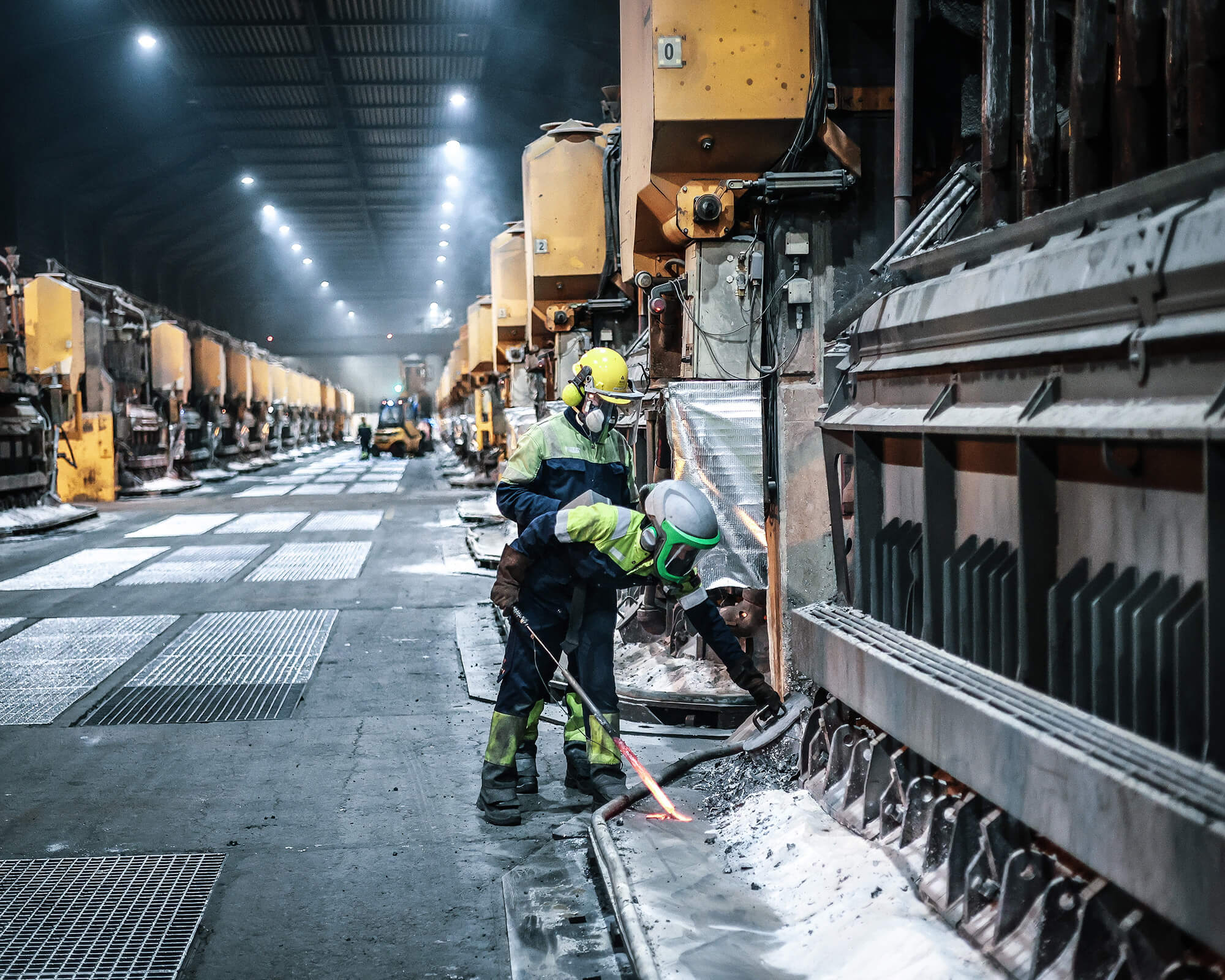June 15, 2023
Process Optimization Yields Emission Reductions

Thanks to a series of actions taken by our Lista team in Norway, the smelter’s anode effect minutes were kept in check throughout 2022.
When converting alumina to aluminum, combining materials in the right proportions is key to achieve the desired electrochemical reaction. More concretely, a low concentration of alumina in the bath will alter this reaction and, in turn, halt the aluminum-making process. This process disruption is known as an anode effect.
The main concern associated with the anode effect is that it generates carbon tetrafluoride (CF4) and hexafluoroethane (C2F6) gases. Otherwise known as perfluorocarbons (PFCs,) these gases are more potent than carbon dioxide (CO2). Hence, minimizing the incidence of anode effects has long been a focus at our Lista smelter.
In 2022, our team saw some success on that front after implementing the following actions:
- Sourcing higher-quality ingredients for anodes
- Creating an early-warning system to alert operators of pot imbalances
- Implementing a process to systematically uncover, report and fix anode effects
These actions resulted in a 31 percent reduction in cumulative anode effect minutes per pot day from a 2018 baseline of 0.39 anode effect minutes per pot day. This translates into improved operational efficiency, consistent aluminum production, and reduced emissions.
The Lista team was able to maintain these results for more than 12 consecutive months, making 2022 their first full year with green anode effect numbers. That is, the anode effect minutes were kept below the threshold goal.
Thanks to its team’s ingenuity, Lista transformed a significant challenge into an opportunity. This is the embodiment of our purpose, to turn raw potential into real progress. We intend to sustain this progress by continuously optimizing our processes and sharing lessons learned.